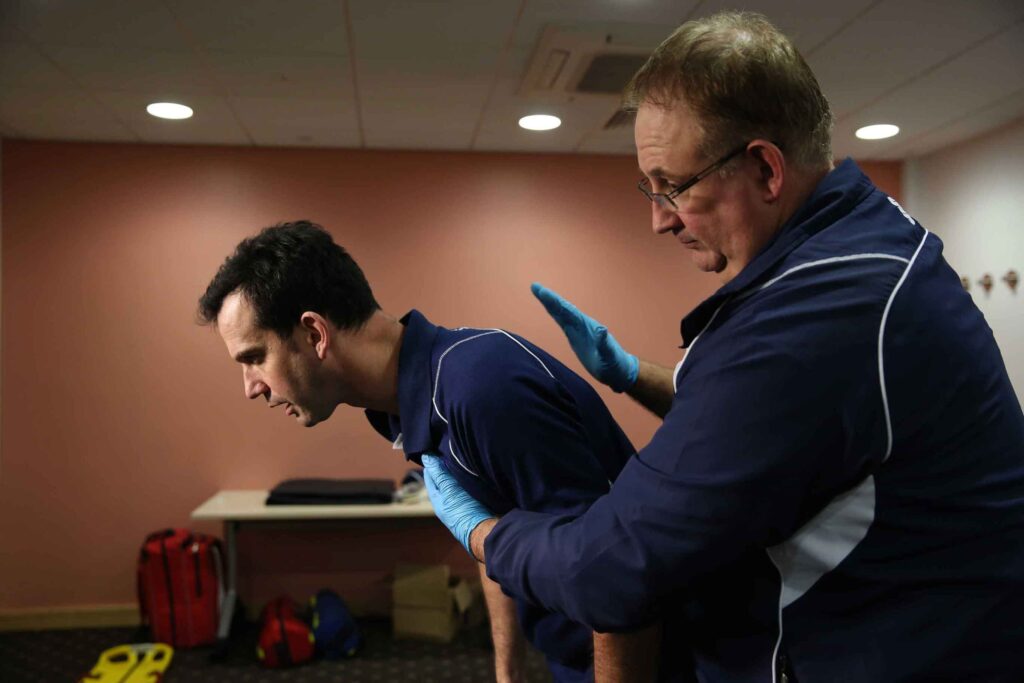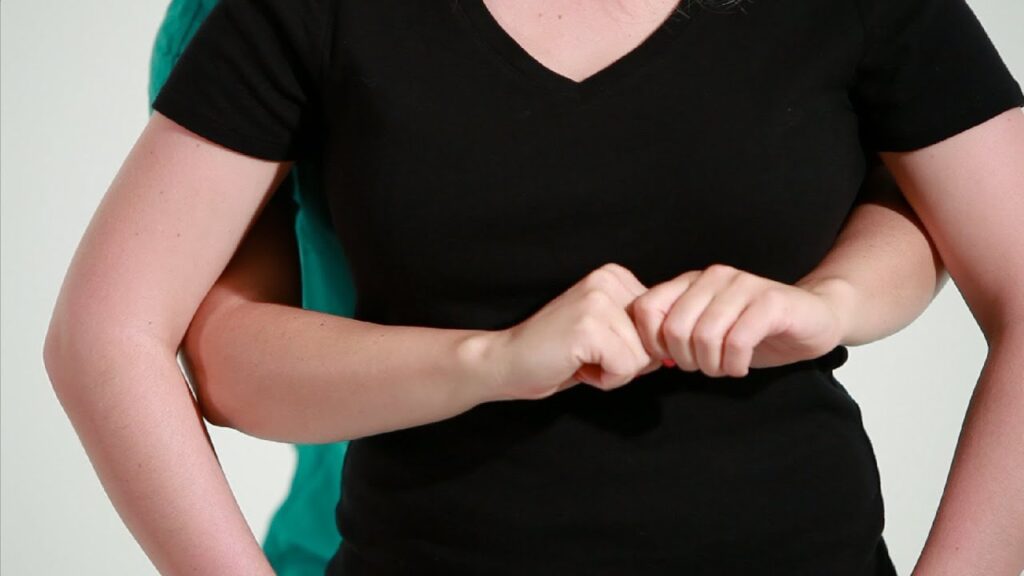Each year, hundreds of people are taken to the hospital right away after choking, and hundreds more of these cases result in death.
Choking is when someone’s airway gets blocked partly or completely, and they are unable to breathe. The most common cause is food. Choking cuts off oxygen to the brain. Immediately give first aid if you or someone else is choking.
Call Texas Specialty Clinic if the person is choking, has trouble breathing, or is unconscious.

What are the signs that a person is choking?
Signs that indicate a person is choking :
- The throat was gripped by one or both hands.
- Panic, confusion, or shock look.
- Unable to talk.
- Noisy or strained breathing.
- Coughing that can be mild or forceful.
- Skin, lips, and nails turning blue or gray.
- Loss of consciousness.
Allow the person to continue coughing if they are choking and can do so. The following steps are recommended :
- Give back blows.
- Abdominal thrusts.
- It is recommended to alternate blows and thrusts until the obstruction is removed.
The person will typically be able to speak, cry, cough, or breathe if the airway is just partially blocked. Usually, they can remove the blockage on their own :
- Ask them to cough to clear the blockage.
- If they have the object in their mouth, ask them to try to spit it out.
- Avoid putting your fingers in their mouth to help them because they may accidentally bite you.
If this doesn’t help, give back blows.

Back blows
- Stand to the side or behind the choking person. For a child- kneel down behind a child.
- Place one hand on their chest for support and lean them forward. Leaning them forward will cause the object obstructing their airway to exit their mouth rather than drop further.
- Give 5 sharp blows by the heel of the hand in between shoulder blades. Your hand’s palm and wrist are separated by the heel.
- Ensure the blockage has been cleared.Otherwise, perform up to five abdominal thrusts.
Abdominal thrusts or Heimlich maneuver
Giving abdominal thrusts to infants under 1-year-old or pregnant women is not advised.
- Stand behind the person. For a child kneel down.
- The foot should be placed just in front of the other for balance. Place your arms around their waist and bend them forward.
- Place your clenched fist just above their belly button.
- Take hold of your fist with your other hand and pull five times with a forceful upward and inward motion.
- Repeat this procedure up to 5 times.
- See if the blockage has been cleared. Repeat as necessary.
Give chest thrusts if the person is pregnant
- Stand behind the person, and place your hands at the base of the breastbone.
- Pull inward and upward quickly.
- Continue doing this until the object is moved.
For an unconscious person
- Lay down the person to the floor and arms to the sides.
- If the thing is visible, insert a finger inside the mouth and remove it. If you can’t see the object, never finger-sweep it. There is a risk of pushing the blockage deeper into the airway.
- If the person doesn’t respond, start CPR. Use chest compressions similar to those used in CPR to free the stuck object if the airway is still closed. Use no more than two rescue breaths each cycle. Regularly inspect the mouth for the object.
Steps to perform CPR
- On a flat surface, lay down the person on their back.
- Place your hand, palm down, in the center of the unconscious person’s chest while kneeling at their side.
- Place your free hand on the other. Lean forward and push down quickly, 100 times per minute. This is known as chest compression.
- Repeat the process until the person starts breathing or medical help arrives.

To open an infant’s airway who is choking and is under 1 year old
- Place the infant on your forearm while you are sitting. And place your forearm on your thigh. Hold the infant’s chin and jaw. Lower the head than the trunk.
- Five times on the center of the back, softly but firmly thump the infant by the heel of the hand. The blockage should be removed by gravity and back thumps.
- If the infant hasn’t started breathing yet, place them face up on your forearm. Rest your arm on your thigh and the infant’s head should be lower than the trunk.
- Use your fingers to apply five light but firm chest compressions. Place two fingers below the nipple line and press down around 1 ½ inches. Allow the chest to expand in between compressions.
- If breathing doesn’t begin, repeat the back thumps and chest compressions and seek immediate medical help.
- If the infant’s airway is clear but he or she still isn’t breathing, start infant CPR.
What should you do if an old person starts to choke?
- Assess whether they are choking or not. Let them keep coughing so they can get rid of the choking risk.
- Call Texas Specialty Clinic after minutes of treatment.
- Start with back blows.
- Begin abdominal thrusts.
- You should repeat five abdominal thrusts and five back blows.
- If they have become unconscious, lay them on the ground and begin CPR.
- Begin chest compressions.
- To clear the airway, tilt the person’s head, cover their mouth with yours, and plug their nose. Give two deep breaths, ensuring that their chest rises.
- Repeat chest compression and rescue breaths until medical help arrives or they stop choking.
Complications of choking
Get urgent medical help if they still have a persistent cough and they continue to experience a throat blockage. Serious injuries can result from abdominal thrusts. A medical expert should always check the patient after receiving this possibly life-saving treatment.

